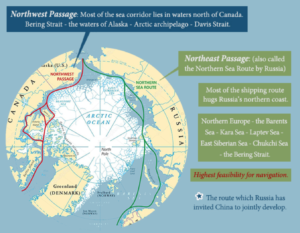
Read Everybody Wants To Rule The Pole, Part 1
In the same year that the Karluk sank, the first air conditioner was installed in a private home; it measured 7ft. high, 6ft. wide, and a mere 20 feet in length.
Archduke Ferdinand was assassinated in June; a few months later the first motorized vehicle appeared in warfare, when a tractor joined horses in the task of moving supplies through the mud.
Home radios weren’t invented yet, but down at symphony hall music lovers heard for the first time Prokofiev’s Sinfonietta, Scriabin’s Prelude No. 2, and Stravinsky’s now famous Three Pieces for String Quartet.
The first electric traffic light was installed, a new material called stainless steel appeared on store shelves, and a 19 year-old Babe Ruth made his major league debut with the Boston Red Sox.
And yet, despite a hundred years of progress, we know little more about the Arctic today than did Stefansson and Bartlett in 1914. Over 90% of its floor remains unknown.
The Arctic only accounts for 6% of the planet. And even with an unmapped sea floor, last year the Arctic produced:
40 percent of the world’s palladium,
20 percent of its diamonds,
15 percent of its platinum,
11 percent of it cobalt,
10 percent of its nickel,
9 percent of the world’s tungsten, and
20 percent of Russia’s entire GDP.
What’s more, the Arctic is estimated to hold at least 33% of the world’s undiscovered natural gas reserves, 13% of the world’s remaining undiscovered oil, and vast quantities of gold, silver, phosphate, bauxite, iron ore, graphite, copper, titanium, iron, lead, coal, uranium and rare earth metals.
In other words, everything you can dig up and sell decided to congregate up north under a bunch of ice.
Far less underground wealth has incited many of history’s greatest gold rushes, but a rush to mine trillions in resources is just the beginning of this story. Other attributes of the Artic also promise great prosperity.
Shipping: Over 90% of the world’s goods are transported by sea.
Two months after the Karluk sank, an engineering triumph was unveiled that would change transport forever. The Panama Canal was a 48-mile long shortcut that bridged the Atlantic and Pacific Oceans, the same way the Suez Canal, 40 years earlier, had bridged the Atlantic with the Indian Ocean.
The Suez and Panama canals eliminated the need for ships to travel around the southern tips of Africa and South America, respectively. This reduced journey times by as much as 40% (fact check), saving thousands of miles and billions of dollars.
A hundred years later, newly thawed Arctic paths threaten to sideline the dominance both canals have enjoyed for a century. The Northwest Passage and The Northeast Passage (Also referred to as The Northern Sea Route) offer an alternative to the canals, shorter and faster by up to 30%.

Presently, one passage is more suited to commercial shipping than the other. Much of the multi-year ice throughout the Northwest Passage is too deep for icebreakers to cut a sustained path suitable for commercial shipping. And it’s underdeveloped, so it will likely be decades before the Northwest Passage poses a threat to the Panama Canal.
The Northeast Passage, however, is a different story, and a direct challenge to the Suez path. Shorter. Faster. Cheaper. And as Putin likes to point out, no pirates either. That’s a relief.
Shanghai to The Netherlands via the Northeast Passage is 2,500 miles less than using the Suez Canal. That’s 24% shorter.
Yokohama, Japan to the Netherlands via the Northeast Passage is over 4,000 miles less than using the Suez Canal. That’s 37% shorter.
But for the Northeast Passage to become the commercial path of choice from Asia to the Atlantic and back, it will need more than just a shorter route. Which leads us to the next Arctic development unfolding now, to the tune of billions of dollars:
Infrastructure: To be functional and competitive, the NE Passage needs
-Accessible ports that can provide supplies, provisions and general support throughout the voyage.
-Ship Repair Yards.











Leave A Comment